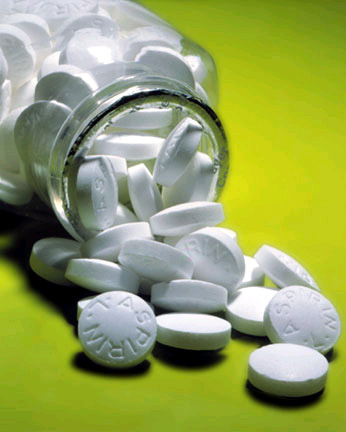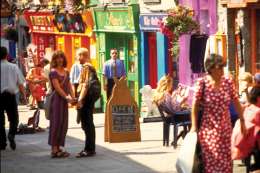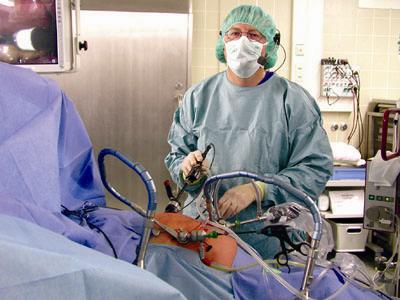A “VIRTUOUS CIRCLE” BETWEEN LIVING COSTS, WAGE EXPECTATIONS AND BUSINESS COST COMPETITIVENESS IS NEEDED TO RETURN STABILITY TO THE IRISH ECONOMY, THE HEAD OF FORFÁS, THE NATIONAL POLICY ADVISORY BOARD FOR ENTERPRISE, HAS SAID.
Commenting today on the findings of the board’s 2012 report on the costs of doing business in Ireland, chief executive Martin D. Shanahan said cost competitiveness here had improved markedly in the past three years, but added that more action was needed to reduce costs further.
The report identified energy costs as “a cause for concern, particularly for SMEs”, and said that Ireland was the fourth most expensive location in the euro area for electricity. The cost of legal services here were 11 per cent above 2006 levels, despite the recession, it said.
While total remuneration costs per employee fell by 0.9 per cent annually from 2008 to 2011, compared to average annual euro area growth of 4.6 per cent, labour costs in Ireland remain more than six per cent higher than euro area averages.
The cost of living in Ireland was also high, the report stated. On average, Irish consumer prices were found to be 12 per cent above the euro area average and Ireland was identified as the third most expensive location in the euro area for consumer goods and services.
Food and non-alcoholic beverages, in particular were found to be relatively more expensive here, while the cost of health and education services has steadily increased since 2000.
On the flipside, property-related costs fell “dramatically” from 2007 to 2011, according to Forfás, with the cost of constructing a prime office unit falling by 32 per cent and rental costs for office units dropping by 45 per cent.
Architecture, engineering and technical testing services have fallen by 12 per cent since 2006. The price of computer programming and consultancy services, advertising and media services, fell by five per cent over the same period.
HP to employ 800 at revamped high-tech facility in Galway
Building will be dedicated to research & development
Hewlett Packard has announced it is to develop a new high-tech facility to replace its existing plant in Galway.
The new building will be dedicated to research and development, cloud technology and business services with capacity for between 700 and 800 staff.
It will be built on a site next to HP’s current European Software Centre in Ballybrit in Galway which will close.
It is hoped work on the new facility and the creation of 150 construction jobs will get underway later this year once final planning permission is approved.
“Our facilities in Galway are proving to successfully attract some of the best and brightest talent in key IT growth areas for HP,” said John Hinshaw, Executive Vice President of Global Technology and Operations.
An Taoiseach Enda Kenny visited the plant in Galway saying “The construction of a new state of the art R&D building by HP is a testament to their Galway staff and operations in Ireland. HP has been a valued business partner in Ireland throughout the years and this new investment will see HP and Ireland remain at the forefront of software research and cloud computing technology.”
Here you can watch HP EVP John Hinshaw explain the decision to build this facility in Galway.
Colorectal cancers predicted to rise in Ireland by up to 45% by 2020
Increase due to growing ageing population
The number of Irish people suffering from colorectal cancer is predicted to increase by 34 per cent in women and 45 per cent in men by 2020, according to a report published today by the National Cancer Registry
The number of Irish people suffering from colorectal cancer is predicted to increase by 34 per cent in women and 45 per cent in men by 2020, according to a report published today by the National Cancer Registry.
The report “Colorectal Cancer Incidence, Mortality, Treatment and Survival in Ireland: 1994 – 2010” found the number of male cases increased from 983 in 1994 to 1343 in 2010 and the number of female cases increased from 769 in 1994 to 955 in 2010.
 The increase in cases is due to a growing ageing population and will present a challenge to the health service in years to come. The vast majority of colorectal cancers present in women and men over the age of 65.
The increase in cases is due to a growing ageing population and will present a challenge to the health service in years to come. The vast majority of colorectal cancers present in women and men over the age of 65.
67 per cent of women and 69 per cent of men diagnosed with colorectal cancer were aged over 65 while 14 per cent of women and 11 per cent of men presented aged less than 55. 22 per cent of colorectal tumours in women occurred in the rectum compared with 30 per cent in men. The ratio of male to female colorectal cancer is approximately 13:10.
11 per cent in women and 14 per cent in men of all invasive cancers, excluding non-melanoma skin cancer, were colorectal cancers in 2007-2009 making it the second most common tumour diagnosed in women after breast cancer and in men after prostate cancer.
It represents the third leading cause of cancer death in women after lung and breast cancer and the second leading cause of cancer death in men after lung cancer.
Around 950 woman and 1330 men were diagnosed with colorectal cancer annually during 2007-2009. 424 women and 550 men died from the disease in Ireland in 2008.
The report finds, however, that the survival rate for men in particular is significantly improving. It puts this down to greater uptake of treatment and earlier diagnosis. For women, the survival rate for colon cancer showed only a modest improvement and no improvement for rectal cancer.
Surgery is the first line treatment for the cancer. While up to 10 per cent of colorectal cancers are hereditary, lifestyle factors play a significant role in minimising the risk of developing the disease.
Smoking increases the risk of developing colon, but not rectal, cancer. Alcohol increases the risk of both as does being overweight, not taking exercise and eating a lot of processed and red meats.
Eating fruit, fish, non-starchy vegetables, dairy products and foods containing dietary fibre or the B vitamin folate can lower risk.
 The report says regular use of aspirin or other non-steroidal anti-inflammatory drugs may reduce colorectal cancer risk by up to half.
The report says regular use of aspirin or other non-steroidal anti-inflammatory drugs may reduce colorectal cancer risk by up to half.
Risk is also lower in women taking hormone replacement therapy and is likely also to be lower in those who have taken oral contraceptives.
People who have a first degree relative with colorectal cancer have around a two-fold increased risk of developing the disease themselves.
Incidences of the disease are higher than the national average for both men and women in Co Cork and lower than the national average in Co Kildare for women and in counties Kilkenny and Meath for men.
Ireland has a higher incidence of colorectal cancer than the EU average. In 2008, the highest incidence of the disease for men was in Hungary, the Czech Republic and Slovakia. The lowest incidence, for both sexes, was in Cyprus and Greece.
Donal Buggy, head of services at the Irish Cancer Society, said given the percentage of Irish population over the age of 65 years will significantly increase during the period 2010-2020, it was reasonable for the National Cancer Registry to project an increase in the number of colorectal cancers.
“We are fortunate that BowelScreen the new government funded national bowel screening programme has commenced. Bowel screening aims to find bowel cancer at an early stage in people who have no symptoms. The service will initially offer free bowel screening to men and women aged 60 to 69 years and will over time be offered to all men and women aged 55 to 74,” he said.
Anyone worried about bowel cancer can speak to an Irish Cancer Society specialist cancer nurse on Freefone 1800 200 700 or visit http://www.cancer.ie
Big Boost for Irish car industry with rise in number of new cars licensed


Boost for car industry with a rise in the number of new cars licensed
The latest figures from the Central Statistics Office show that the number of new cars licensed in March inched 0.1% higher than the same time last year.
The CSO said that 10,596 new cars were licensed last month, compared with 10,581 in March 2012.
Of the new cars licensed last month, 29.1% were petrol while 70.4% were diesel.
The most popular brand of car sold last month was Volkswagen, followed by Nissan, Toyota and Ford.
The CSO figures also show that the number of new goods vehicles licensed last month came to 1,057, down 8.5% from the same time last year.
Chocolate and the gelling agent agar recipe can halve the fat value


The new method can be easily adapted to existing chocolate manufacturing
Chemists have found a new way to halve the fat of chocolate using liquids which does not change the “mouthfeel”.
Low-fat preparations of chocolate are well known, but their textures tend not to match the real thing.
A report at an American Chemical Society meeting described a method using the popular gelling agent agar to make tiny “sponges” that displace fat.
University of Warwick researchers said water, fruit juice or even alcohol could replace up to half the fat.
When used with alcohol, Stefan Bon said they were like “tiny vodka jellies”.
What has held up such chemistry is making what is known as an emulsion – a thorough blend of materials that do not tend to mix, such as oil and water.
Normal chocolate gets much of its velvety feel from an emulsion of fat globules suspended within the solid.
Replacing those is tricky – any substitutes have to remain dispersed throughout the chocolate as it is heated and cooled to a solid, and they have to remain small.
Dr Bon said that the smooth texture of chocolate requires that the globules be smaller than about 30 millionths of a metre across – about half the width of a human hair.
Normal chocolate gets its velvety feel from an emulsion of fat globules suspended within the solid
The Warwick team first published an attempt to crack the problem in a 2012 paper in the Journal of Materials Chemistry.
That formulation made “armoured” spheres of liquid, using two materials – fumed silica, a form of the same material from which sand is made, and chitosan, a compound derived from shellfish.
‘Not healthy, but exciting’
That solution required that the liquid be slightly acidic, so the team used fruit juices.
“That was exciting because it had the combination of fruit juice and chocolate, and everybody went wild on it,” Dr Bon told BBC News.
“Then some people – especially in the UK – said: ‘but can we do alcohol?’
“We’ve been working very hard in the lab to make a system that can do that – instead of these armoured systems we then thought we could make tiny little vodka jellies.”
The new approach is simpler to carry out and more versatile in the replacements it can employ.
It also avoids any concerns consumers may have with the nano-structured fumed silica, or dietary restrictions on eating shellfish products.
“So you can stick to your fruit juice if you want, but you can also make a vodka-based chocolate bar, which is exciting – obviously not very healthy, but exciting,” Dr Bon said.
On a healthier note, he added that using the method with other liquids could lead to significantly reduced sugar content as well.
“It opens the route to different types of confectionery candy that can be placed on the shelf next to everything else that’s out there already,” he said.
Irish rowing team attempts first crossing of the Northwest Passage
In July, Irish and Canadian rowers will attempt the first crossing of the Northwest Passage in the Arctic Ocean, one of the world’s most notorious sea routes, in a single season
In just under four months we will sit into a 25ft rowing boat with three other men, high up in the Canadian Arctic, to embark on our quest to row 2,000 miles across the infamous Northwest Passage. My last expedition of this nature was a few years ago rowing across the Atlantic Ocean. On that occasion my sole team-mate was my then girlfriend, who is Canadian. The on-board scenery this time round will be far less attractive and a good deal hairier.
Northwest Passage is a sea route that connects the Atlantic and Pacific oceans. It is the collective name of the series of Arctic waterways through the Arctic Ocean, along the northern coast of North America, through the Canadian Arctic archipelago. The waterways separate the islands of the archipelago from each other and from the Canadian mainland.
This journey began two years ago in my adopted country of Canada, where I was giving an adventure-related talk. One of the other speakers at the Vancouver event was the accomplished Canadian adventurer Kevin Vallely, whose parents come from my hometown, Limerick. He holds the world record for the fastest trek to the South Pole and, as I was interested in going there one day, we arranged to meet after the show. I wanted to pick his brains about the Pole and he wanted to pick mine about the boat I used to row across the Atlantic.
For years, Vallely had contemplated an expedition that has never been done before. A handful of people have tried to cross the Northwest Passage, but nobody has yet traversed it in a single season under human power alone. He had thought about doing this, but attempting such a trip in a traditional kayak or canoe would be foolhardy. Setting off in an ocean-rowing boat would be an entirely different proposition, and so our expedition was born.
We knew that a four-man crew would stand a much better chance of success than a team of two so, when Vallely mentioned the idea to his friend Frank Wolf, we had the third team member. Wolf is another hugely accomplished Canadian adventurer, and the only person ever to canoe across Canada.
Enigmatic past
Enigmatic past
When a friend of mine, Denis Barnett, learned about the trip, he wanted in too. Barnett is from Dublin and although this is his first major expedition, he has an interesting adventure background in rally driving and skydiving. Together, on July 1st, we will embark on a voyage through not only one of the harshest places on Earth but one with a very enigmatic past.
The passage has an intriguing history. For centuries, it was the Holy Grail for explorers. If it did exist it could provide a trade route to the Orient, bringing fame and fortune to the explorer who achieved this feat. The history of the passage is shrouded in tales of tragedy, adventure and disaster. Many supremely equipped expeditions perished high up in the Canadian Arctic in their quest to find the elusive route.








No comments:
Post a Comment